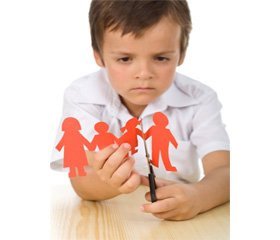Журнал «Здоровье ребенка» 7 (58) 2014
Вернуться к номеру
Depression and the suicidal behaviour bound by at children and teenagers, modern views and the state of the problem
Авторы: RymshaS.V., PypaL.V., SvistilnikR.V., LisitsaJ.N. - Vinnitsa national medical university named by N.I.Pirogov (Vinnitsa, Ukraine)
Рубрики: Педиатрия/Неонатология
Разделы: Справочник специалиста
Версия для печати
The suicidal behavior bound by it and social value of this disease with its consequences is lead the state-of-the-art review of the world literature in which the etiology, modern views on a pathogenesis are clarified epidemiology, clinic, diagnostic criteria of depressive distress at children and teenagers, and also. Key references on treatment and prophylaxis of depression at children and teenagers according to last the European and American references based on a position of demonstrative medicine are surveyed.
depression, a suicide, children, treatment.
Diagnosis
Variations in diagnostic criteria for MDDand dysthymicdisorder (DD) that are set for adults, depend on the age of the patient. For example,child withMDD or DD may be irritable rather than sad. In children with VDR weight loss cannot be observed, and they cannot put it on. For the diagnosis of AS in adults, the duration of illness should be at least 2 years for children and for adolescents only 1 year [10]. Dysthymicdisorder ordysthymiais described as a chronic mood disorder in adolescents and is characterized by long-term depression, dysphoria, low self-esteem , a sense of hopelessness that lasts for at least 1 year , herewith all the symptoms are not enough sever , and periods of worsening of the symptoms are not enough long in order to diagnose recurrent depression. When there are high levels of DD irritability and anger in everyday life, you can meet hyperemotional reaction to social problems. With DD can dominate somatovegetative disorders (cardiac, hyperventilation syndrome, abdominalgia, hyperhidrosis), sleep disturbances, pseudovestibulardisorders. Phenomena’s of asthenia, hypochondriacally layers are increasing due to the condition of evolution [8, 28].
Bipolar depression can be diagnosed when the patient's condition meets the criteria for MDD, and there are episodes of mania or hypomania in anamnesis. [36]Nowdays in the diagnosis of MDDis used a variety of scales and questionnaires to help you quickly determine the presence of depression and its severity , including children .The most common diagnostic methods for the detection of depression in adults in the world are the Beck Depression Scale (Beck Depression Inventory), Hamilton Depression Scale (Hamilton Rating Scale for Depression) and others. However, it is unknown whether these are effective for use in children. The most often for diagnosis MDD in children is used Reynolds Adolescent Depression Scale (RADS) that is specific to adolescence at 13-18 years, Center for Epidemiological Studies - Depression Scale (CES-DS), which was used in sociological studies of adults , and the next began to be used in adolescent, Columbia DISC Depression Scale for adolescents of 11 years. In the process of research is Kutcher Adolescent Depression Scale (KADS), which shows good reliability, promising sensitivity and specificity (AUC 0.89) [23, 28].
Treatment
There were developed the guidelines from the standpoint of evidence based medicine in respect of the child and adolescent patients with DD and MDD by British National Institute of Health and Clinical skills (NICE) that is used in most European countries and are presented below , and supplemented with recommendations GLAD-PC ( Guidelines treatment of adolescent depression and acute care USA) [23, 24, 28].
Dysthymia
Treatment with antidepressants should not be used in children and adolescents as initial therapy of dysthymia and mild depression (Level B) [28]. The initial choice of treatment of dysthymia and mild depression while maintaining symptoms and in the absence of comorbid diseases and suicidal behavior after 4 weeks of observation should be cognitive-behavioral therapy (CBT) for 2-3 months (Level B) [24, 28]. The latter is effective in 60-70 % of patients. Family therapy can be as effective as antidepressants for the treatment of dysthymiaor mild depressive disorder [16].

